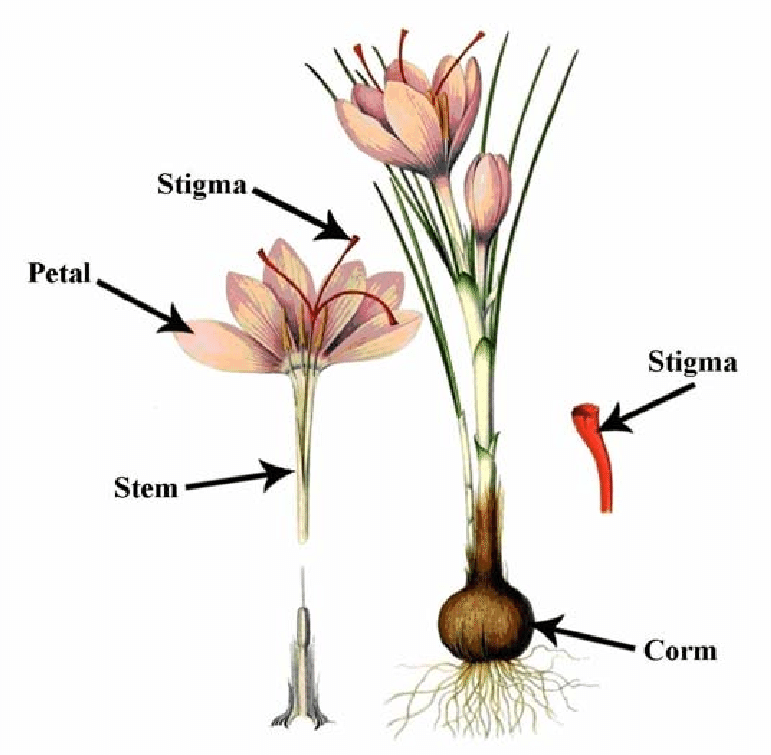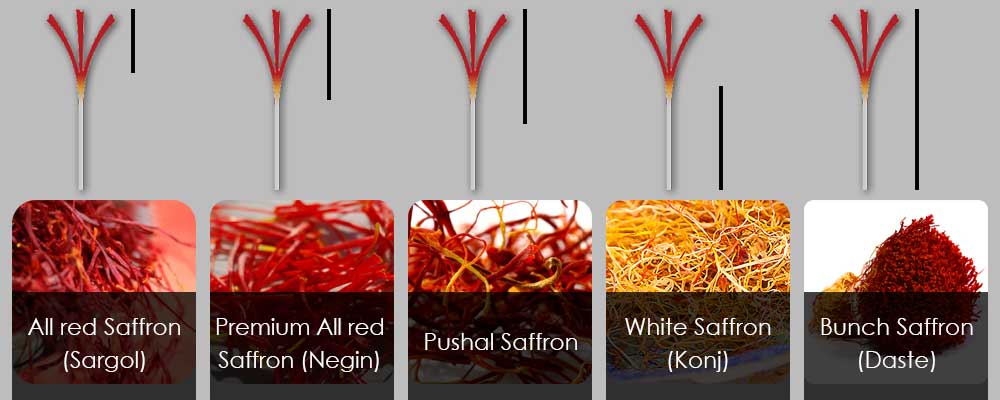what is saffron stigma?
Saffron stigma is the most expensive and the only agriculture product that is sold by the weight of per gram, it has its own importance among agriculture products, its importance is due to its limited need to water, once harvested it can be cultivated from five to seven years, can be harvested infertile land, can easily be transported.
what is saffron?
One of the oldest natural plants which have attracted the world by its significant characteristics such as color, taste and aroma, Saffron is the most expensive product and pharmaceutical plant in the world, saffron has been grown from ages, all over the world.
Historically the word saffron goes as back as 10000 years, saffron is said to be derived from the word “zarparan”ii in Dari language which means that a flower its stigma is valued the same as gold like precious and expensive metal and this word had been turned in to saffron later on.

It is said differently in many languages in Pashto and Arabic it is pronounced as “Zaferan”, in Farsi and Turkish it is pronounce as “Zefrun”, in English Saffron, in Spanish “Azafran” and French “Safrane”. Experts says that saffron has long been grown in Greece, Turkey, Afghanistan and Iran, and it has spread from far north up to far east of India, China, from West up to Spain.
saffron stigma as part of saffron flower
The flower has one three-pronged stigma, which is the distal ends of the plants carpels. Together with its style, the stalk connecting the stigma to the rest of the plant, these components are often dried and used in cooking as a seasoning and coloring agent. Saffron, which has for decades been the worlds most expensive spice by weight, is native to Southwest Asia.

Saffron comes from a crocus flower. The female pistil has 3 components, the stigma, style and ovary. The pistil has one style that branches into three distinct stigmas. These three stigmas are the Saffron threads.
saffron stigma specification
Saffron is characterised by its stunning golden yellow colour, a bittersweet taste and an iodoform – or hay-like fragrance; these are caused by the chemicals picrocrocin and safranal.
It also contains a carotenoid dye, crocin, that gives food a rich golden-yellow hue. These traits make saffron stigma a much sought-after ingredient in many foods worldwide. Saffron also has medicinal applications.

What is saffron grade?
Saffron types are graded by quality of saffron stigma according to laboratory measurements of such characteristics as crocin (colour), picricrocin (taste), and safranal (fragrance) content. Other metrics include floral waste content (i.e. the saffron spice samples non-stigma floral content) and measurements of other extraneous matter such as inorganic material (“ash”).

A uniform set of international standards in saffron grading was established by the International Organisation for Standardization, which is an international federation of national standards bodies. Namely, ISO 3632 deals exclusively with saffron. It establishes four empirical grades of colour intensity: IV (poorest), III, II, and I (finest quality). Saffron samples are then assigned to one of these grades by gauging the spices crocin content, which is revealed by measurements of crocin-specific spectroscopic absorbance.








Leave a Reply
Want to join the discussion?Feel free to contribute!